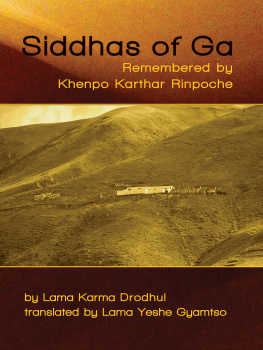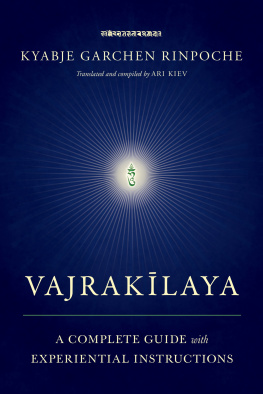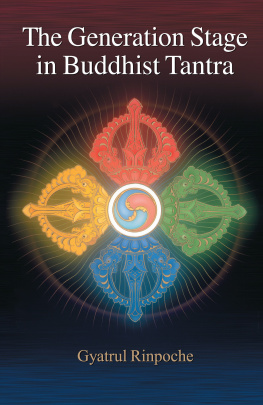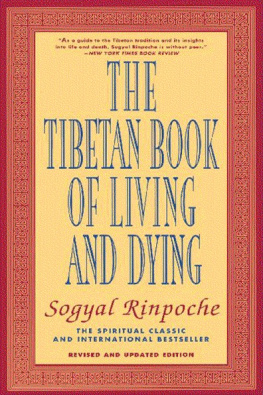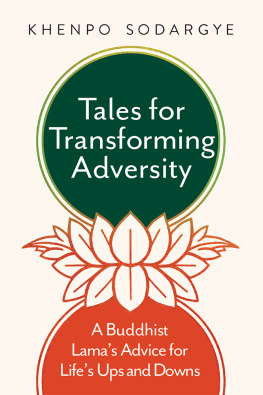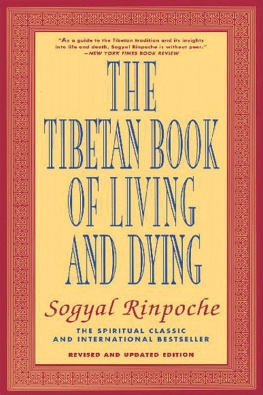
THE PRACTICE OF
VAJRAKILAYA
THE PRACTICE OF
VAJRAKILAYA
Oral teachings given by
Khenpo Namdrol Rinpoche
at
Kunzang Palyul Choling
Poolesville, Maryland, USA
June 1995

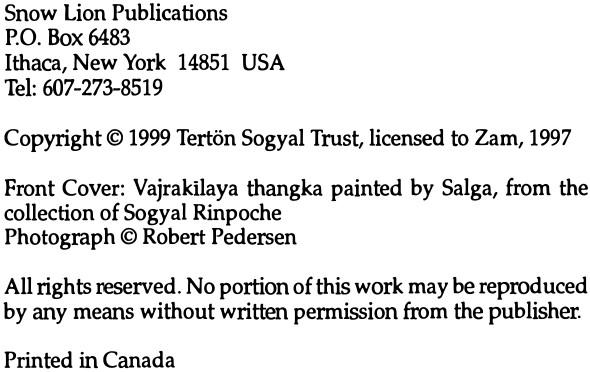

Contents
Foreword
The practice of Vajrakilaya blazes at the very heart of the ancient Vajrayana traditions of Tibet. The wrathful heruka Vajrakilaya is a yidam deity who embodies the enlightened activity of all the buddhas, manifesting in an intensely wrathful yet compassionate form in order to subjugate the delusion and negativity that can arise as obstacles to the practice of Dharma. In fact, the practice of Vajrakilaya is famous in the Tibetan Buddhism as an exceptionally powerful method to remove obstacles, destroy the forces hostile to compassion, and purify the spiritual pollution so prevalent in this age.
Throughout the history of the Dharma in Tibet, the greatest masters and siddhas of the Ancient or Nyingma tradition have engaged in the Vajrakilaya practice. It has passed from Padmasambhava, Vimalamitra, Trisong Detsen,Yeshe Tsogyal, and Dorje Dudjom, through great terma revealers such as Ratna Lingpa, Jikme Lingpa, Jamyang Khyentse Wangpo, Dudjom Lingpa and Lerab Lingpa, down to the great teachers of the present day. Yet Vajrakilaya is practised by followers of all the Tibetan Buddhist traditions. It is a practice which has been central to the Sakya school, handed down since the time of Khon Luyiwangpo, a disciple of Padmasambhava; it is practised in the Kagyu tradition, as well as the Gelukpa; and both the 13th Dalai Lama and His Holiness the 14th Dalai Lama have treasured Vajrakilaya as their yidam deity.
Countless practitioners have attained realization through the power and blessing of Vajrakilaya. My own masters, especially Jamyang Khyentse Chokyi Lodro, Dudjom Rinpoche and Dilgo Khyentse Rinpoche, were all great practitioners, holders and revealers of the transmission of Vajrakilaya. I remember well one golden August day in 1990, when Dilgo Khyentse Rinpoche, granting the empowerment of Vajrakilaya to over 1500 western Dharma practitioners in France, explained:
If you choose Vajrakilaya as your yidam deity, it is very easy to progress on the path, since all obstacles are naturally dispelled and you can achieve the supreme siddhi without any fault.On the Mahayana level, Vajrakilaya is the Bodhisattva Vajrapani, who promised to accompany any bodhisattva, like a shadow, from the path of accumulation up to the tenth bhumi. And for that bodhisattva, he would clear all obstacles and gather all favourable conditions necessary for progressing along the path. Vajrakilaya is none other than Vajrapani manifesting as a yidam heruka-the one who clears away all hindrances on the path to enlightenment.
Khyentse Rinpoche spoke of the special link between the Vajrakilaya and Guru Padmasambhava:
Although he had accomplished other deities like Yangdak, Hayagriva and Chemchok Heruka, when it came to repelling obstacles and difficulties, he would invariably turn to the practice of Vajrakilaya. For Guru Padmasambhava, whose renown shines throughout the world and is as familiar to us as the sun and moon, Vajrakilaya is the quintessential object of meditation.
The publication of this remarkable teaching on Vajrakilaya by Khenpo Namdrol brings me great joy; it will undoubtedly be of tremendous interest and inspiration to practitioners everywhere. Khenpo Namdrol has received teachings from many of the greatest Tibetan masters, such as Kyabje Dilgo Khyentse Rinpoche, Kyabje Penor Rinpoche, Kyabje Khenpo Jigmey Phuntsok and Kyabje Dodrupchen Rinpoche, and we owe him a great debt for the service he has given to the Nyingma tradition--espe- cially for his work in establishing the Ngagyur Nyingma Institute in Bylakuppe, South India. Followers of the Nyingma tradition look to him as one of the most important khenpos in the Nyingma school.
I pray and I trust that the teachings presented here will reach and truly be of benefit to as many as possible. As the 'Summoning of Blessings' from the'Deepest Heart Essence of Vajrakilaya,' a terma of Lerab Lingpa, says:
In the practice places of India, of Nepal and Tibet, Master Padmakara, you attained The siddhis of the eight sugatas of Kagye And of Vajrakilaya; in the same way Pour down your blessings on us here now, Grant us the attainments, ordinary and supreme!
Sogyal Rinpoche
Lerab Ling, June 1997

Kyabje Dudjom Rinpoche

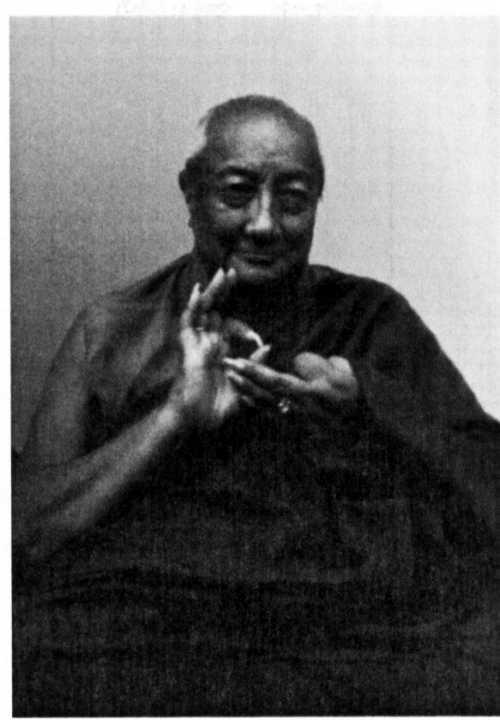

Kyabje Dilgo Khyentse Rinpoche
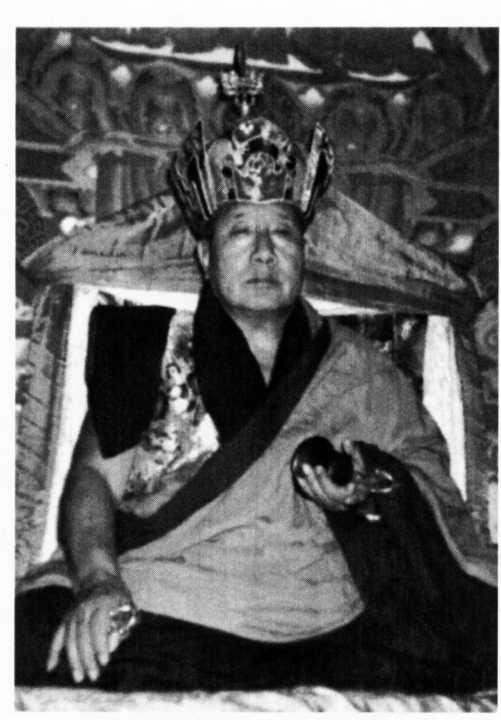

Kyabje Penor Rinpoche


Kyahje Khenpo /igmey Kinpoehe
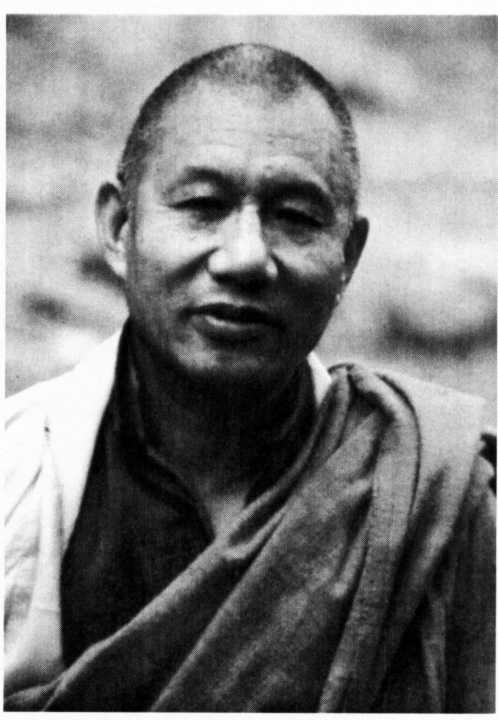

Kyabje Dodrupchen Rinpoche
AS YOU SET OUT TO READ these teachings, I would like to invite you, first and foremost, to arouse in your minds what is known as bodhicitta. Bodhicitta, literally 'enlightenment-mind', means that you are aspiring to attain the level of buddhahood in order to benefit all sentient beings, who are as limitless as space. Inspired by this motivation to become enlightened for the sake of others, you should receive these teachings of the secret mantra, and then practise them genuinely. This is how we understand bodhicitta.
Khenpo Namdrol Rinpoche
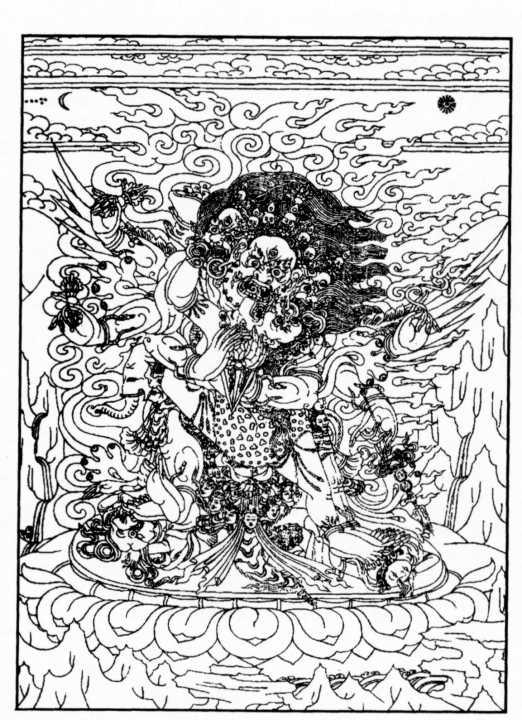
Vajrakilaya
Introduction
The subject matter of this book comes from the teachings of the vehicle of the unsurpassed secret mantra. In general, the tantric teachings of secret mantra, considered the most important teachings of Indian Buddhism, all essentially agree with regard to the highest realization of buddhahood, which is their ultimate fruition. However, there exists a variety of traditions, and this is due to the different modes of teaching and emphases employed by the Buddha for addressing different faculties and inclinations among the disciples needing to be trained. In particular, there came to be two different traditions of the tantric teachings in Tibet corresponding to the periods during which these teachings were translated. Those which were translated in the earlier period came to be known as the 'earlier propagation', or Nyingma, while those translated in the later period came to be known as the 'later propagation', or Sarma.
Next page

